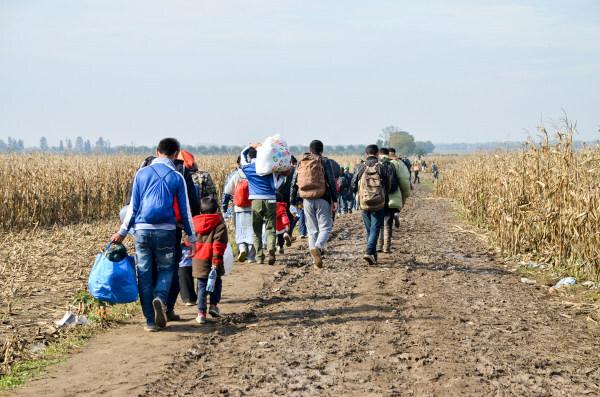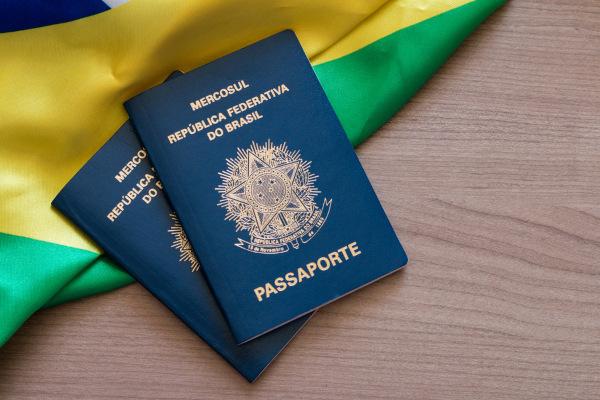THE migrationcorresponds to the displacement of people and populations at terrestrial surface. This movement can occur spontaneously or forced, within the limits of the same territory or not, and also have a seasonal or permanent character. The reasons why people migrate are very varied., being associated with economic, cultural, political, social and even natural factors.
It is observed, in Brazil current, a large inflow of migrants from Latin American and African countries, while emigrants also head towards neighboring countries and developed nations, such as the United States, following the global trend. Internally, there was the intensification of return migration and growth of medium cities, especially close to large urban centers.
Read too: Causes and consequences of current immigrations in Brazil
What is migration?
migration is the movement or displacement of people and populations across the Earth's surface. The definition provided by the International Organization for Migration (IOM), now an agency of the United Nations, comes very close to this conception.
The concept covers all types of displacement that happen from one place to another, regardless of the spatial or temporal scale, and are much more part of our daily lives than it may seem at first View. We'll cover this issue in more detail when we cover migration types.
The migration happens in several animal species, and the use of the term goes beyond demographic science. Other areas of knowledge, such as biology, use the term to describe the seasonal shift of bird populations, fish, mammals and insects.
What types of migration?
Migrations can be categorized into different types. according to different criteria, such as the start and finish area, the distances covered, the elapsed time and even the motivations behind these movements. This qualification helps us in the study and elaboration of analyzes about the phenomenon. See below for the main types of migration.
Spontaneous or voluntary migration: it happens according to the individual's will.
Forced migration:it is called refuge migration in some cases. It is linked to factors external to the person and occurs against his will. It is associated with the political, social and economic situation as well as natural and climatic disasters.
External or international migration: travel between countries, also called immigration.
Internal migration: that which takes place within the borders of the same country.
Inter-regional migration: flow that takes place between different regions within the same country.
Intraregional migration: it occurs between two distinct places within the same region.
Rural exodus: characterizes the movement of populations from fields (rural areas) to urban areas.
urban exodus: it is the inverse process of rural exodus, that is, the urban exodus takes place when city dwellers leave the urban environment and go to the countryside.
Intra-urban migration: type of migration that happens when the individual moves within the limits of the same municipality or urban area.
Pendular or daily migration: category of migration most common and present in our everyday life. It occurs when a person moves from one place to another towards work, college, school or any other purpose and returns to their place of origin the same day.
Transhumance: type of seasonal migration. It is the displacement of workers who will act as labor in temporary crops, such as sugarcane, or in other seasonal activities, such as fishing. At the end of the work period (weekly, monthly or yearly), the individual returns to his/her place of origin.
Seasonal migration: it is a type of temporary migration, such as transhumance, but it covers motivations other than work, such as long periods of drought and other conditions linked to the seasons of the year. After a certain period of time, the migrant returns from where he left.
Return migration: can be described as a second migration. It occurs when a person who had moved to another region, city or country does the reverse process and returns to their place of origin.
Nomadism: carried out by people who do not have a fixed abode and are constantly moving from one place to another.
Diaspora: defined as the forced or voluntary dispersal of an entire population from an area. An example is the African diaspora, which occurred when Africans were forcibly removed from their countries and displaced to other regions, such as the American subcontinents, to be sold and enslaved.
Read too: Causes and consequences of the refugee crisis

What are the causes of migration?
Whether spontaneous, forced, national or international, migrations are always associated with one or more motivations. We list some of them below.
Economic: derived from the individual's will to improve the living conditions in which he/she finds himself, going in search of employment opportunities with better salaries. It can also be caused by a situation of crisis in the place of origin.
Work: the person travels to their place of work every day, as in pendular migration, or those who migrate temporarily to exercise a specific activity, such as transhumance.
Policies: happen in contexts of crisis, political conflicts and dictatorial regimes, which can generate unsustainable conditions for people or groups, who end up migrating to ensure their freedom and safety.
Ethnic and Religious Persecutions: it is about refuge migration. Due to the constant threat in their place of origin, groups persecuted by the ethnic group to which they belong or by their faith flee to other places, often with no prospect of returning.
Cultural: they happen when there is cultural identification with the place where one is going, or even when there is the purpose of cultural exchange with other social groups. They may also have a religious nature.
Natural: caused by destructive natural phenomena such as hurricanes, tsunamis, earthquakes, volcanic eruptions or extreme weather conditions.

Migration in Brazil
Migratory flows are present in Brazilian territory since the beginning of its formation. The 16th century represented the arrival of European migratory streams in the country, coming mostly from Portugal. This same period was marked by the arrival of large contingents of African populations, brought by force from their countries, in order to be sold and enslaved to work in the sugar cane mills.
From mid century XIX, after the prohibition of the slave trade, international migration to Brazil turned into displacements voluntarys of new currents derived from Italy, Germany and Japan, who arrived in the country to exercise paid activities on the coffee farms. In the mid-twentieth century, the context of world war gave rise to the new entry of European, Jewish and Asian immigrants.
A new migratory trend set in from the final decades of the 20th century, characterized by the entry of people coming from neighboring countries and also from African countries Portuguese speakers. More recently, Brazil received many Haitian immigrants and Venezuelan refugees. In the opposite sense, Brazilian emigration follows the current global pattern, which focuses on developed countries, such as the U.S, and border nations, such as Argentina, Peru and PairThehow come.

You internal displacements have equal importance for the process of composition of the national territory. Economic cycles, such as gold, coffee and rubber, in the 18th, 19th and early 20th centuries, triggered inter-regional migration processes aimed at work and settlement in the respective areas where they developed.
THE 1950s marked the displacements derived mainly from the Northeast towards the Midwest of the country for the construction of the new capital, Brasilia. In the following years, there was an intensification of industrialization in the regions South and Southeast, especially São Paulo, which attracted many people looking for work. Furthermore, the expansion of agricultural frontiers in the 1970s it also gave rise to migratory flows from the South to the Center-West regions and a portion of the Northeast.
The current migratory dynamics in Brazil is characterized by the growth of return migrations, notably for the Region North East, and also the departure of people from large urban centers towards medium-sized cities in their surroundings or metropolitan region.
What are the differences between migration, immigration and emigration?
Migration is a very broad term that refers to all types of displacements that happen in space. When we refer to the processes of immigration and emigration, we emphasize the direction in which this movement takes place. THE immigration matches the arrival of a person or a group of people in a certain place. The act of leaving, in turn, is called emigration.
solved exercises
Question 1 - (UEA) Examine the map.

(Maria Elena R. Simielli. Geoatlas, 2013.)
Unlike the pattern registered since the 1950s, a new and important migratory flow has established itself in Brazil. This new pattern of population displacement, with greater force from the 2000s onwards, corresponds to:
A) return migration to the Northeast.
B) forced migration in the Southeast.
C) inter-regional border migration.
D) interstate pendular migration.
E) seasonal migration to the North.
Resolution
Alternative A. The map shows us, among other movements, the high flow that corresponds to return migrations towards the Northeast region, departing mainly from the state of Sao Paulo.
Question 2 - (Enem) “The process of transferring the population to the cities was slow, as for centuries Brazil was an agrarian country. It took more than a century (18th to 19th century) for Brazilian urbanization to reach maturity; and another century for it to assume its current characteristics.”
ENDLICH, A. M. Perspectives on the urban and the rural. In: SPOSITO, M. AND. B.; WHITACKER, A. M. (Orgs.). City and countryside: relations and contradictions between urban and rural. São Paulo: Popular Expression, 2006 adapted).
The population dynamics described indicate the occurrence of the following process:
A) intraregional migration.
B) pendular migration.
C) transhumance.
D) rural exodus.
E) nomadism.
Resolution
Alternative D. The text of the statement is referring to the process of rural exodus, that is, the population's departure from the countryside to the city.
By Paloma Guitarrara
Geography teacher
Source: Brazil School - https://brasilescola.uol.com.br/geografia/tipos-migracao.htm
